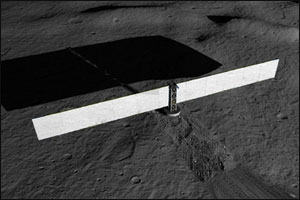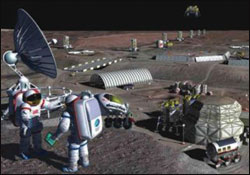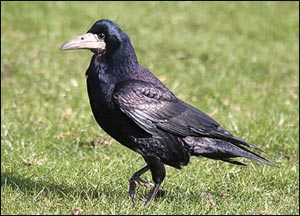|

NASA
steps closer to nuclear power for moon base
NASA has made a series of critical strides in developing new nuclear
reactors the size of a trash can that could power a human outpost on the
moon or Mars. Three recent tests at different NASA centres and a
national lab have successfully demonstrated key technologies required
for compact fission-based nuclear power plants for human settlements on
other worlds. "This recent string of technology development successes
 confirms
that the fission surface power project is on the right path," said Don
Palac, NASA's fission surface power project manager at the Glenn
Research Centre in Cleveland, Ohio, in a statement. Power on the moon,
NASA's current plan for human space exploration is to return astronauts
to the moon by 2020 on sortie missions that could lead to a permanent
outpost for exploring the lunar surface and testing technologies that
could aid a manned mission to Mars. The space agency has been studying
the feasibility of using nuclear fission power plants to support future
moon bases. Engineers performed tests in recent weeks as part of a joint
effort by NASA and the Department of Energy. confirms
that the fission surface power project is on the right path," said Don
Palac, NASA's fission surface power project manager at the Glenn
Research Centre in Cleveland, Ohio, in a statement. Power on the moon,
NASA's current plan for human space exploration is to return astronauts
to the moon by 2020 on sortie missions that could lead to a permanent
outpost for exploring the lunar surface and testing technologies that
could aid a manned mission to Mars. The space agency has been studying
the feasibility of using nuclear fission power plants to support future
moon bases. Engineers performed tests in recent weeks as part of a joint
effort by NASA and the Department of Energy.
Nuclear fission power plants work by splitting the nuclei of atoms in
a sustainable, controllable reaction that releases heat, which can then
be funnelled through a power converter to transfer that energy into
usable electricity. A small fission-based nuclear reactor coupled with a
Sterling engine could provide up to 40 kilowatts of usable energy,
enough to support a moon base or Mars outpost, project scientists said.
That's about the same amount of power needed to supply eight houses on
Earth, NASA officials have said. Key milestones in one of the recent
tests, Palac's team subjected a lightweight radiator panel prototype to
the vacuum conditions it would experience in space, as well as extreme
cold (minus 125 degrees Celsius, or about minus 193 degrees Fahrenheit).
The radiator is about six feet wide and nine feet long, and one of 20
that would be required to keep a lunar fission reactor cool, project
officials said.
For comparison, the four giant solar arrays on the International
Space Station can generate up to 120 kilowatts of usable power - about
the equivalent to support 42 average-sized homes. They extend from a
main truss as long as football field and make the space station easily
visible at night on Earth to the unaided human eye.

A second fission power milestone included pumping molten liquid metal
through a Sterling engine, an engine driven by heat, to simulate how
heat from a nuclear reactor could be shunted to a converter to generate
power. The test was carried out at NASA's Marshall Space Flight Centre
in Huntsville.
The third test bombarded a Stirling engine alternator with radiation,
up to 20 times the cumulative dose allowed for today's fission power
plants on Earth, to see how it would hold up. It passed with flying
colours, NASA officials said. Engineers performed the 26-hour endurance
test at the Sandia National Laboratory in Los Alamos, N.M. "The pace of
progress exhibited by these three achievements in the same time period
is exciting," said Lee Mason, NASA's principal investigator for fission
surface power at the Glenn Research Centre. "It has built the team's
confidence and prepared them for challenges that lay ahead." The next
step for NASA's fission power project is to combine its radiator, engine
and alternator successes into a single non-nuclear power plant
demonstration. That test is slated to begin in 2012, NASA officials
said.
Courtesy: Space
Bird experiment shows Aesop's fable
may be true
From the goose that laid the golden egg to the race between the
tortoise and the hare, Aesop's fables are known for teaching moral
lessons rather than literally being true. But a new study says at least
one such tale might really have happened.

It's the fable about a thirsty crow. The bird comes across a pitcher
with the water level too low for him to reach. The crow raises the water
level by dropping stones into the pitcher. (Moral: Little by little does
the trick, or in other retelling, necessity is the mother of invention.)
Now, scientists report that some relatives of crows called rooks used
the same stone-dropping strategy to get at a floating worm. Results of
experiments with three birds were published online recently by the
journal Current Biology.Rooks, like crows, had already been shown to use
tools in previous experiments.Christopher Bird of Cambridge University
and a colleague exposed the rooks to a 6-inch-tall clear plastic tube
containing water, with a worm on its surface. The birds used the
stone-dropping trick spontaneously and appeared to estimate how many
stones they would need. They learned quickly that larger stones work
better.In an accompanying commentary, Alex Taylor and Russell Gray of
the University of Auckland in New Zealand noted that in an earlier
experiment, the same birds had dropped a single stone into a tube to get
food released at the bottom. So maybe they were just following that
strategy again when they saw the tube in the new experiment, the
scientists suggested.
But Bird's paper argued there's more to it: The rooks dropped
multiple stones rather than just one before reaching for the worm, and
they reached for it at the top of the tube rather than checking the
bottom.The researchers also said Aesop's crow might have actually been a
rook, since both kinds of birds were called crows in the past.
Courtesy: AP Science
Name: Yashoda Gayathri
Chandrasekara,
Gender: Female
Age: 13
School: Sri Sangamitta
Girls' National School, Matale
Hobbies: Playing the
violin, playing netball, reading, collecting stamps and stickers
Age group: 13-17
Address: 30/6,
Warapitiya, Katudeniya, Matale, Sri Lanka
Name: E.J.A.
Dilrukshi Lakmali
Gender: Female
Age: 14
Hobbies:
Watching TV, reading story books, playing volleyball
Pen-pals preferred
from: Singapore, India, China, Australia, Russia, Japan, New
Zealand, England, America, New York, Mexico, London
Age group: 12-20 (girls
only)
Address: 209/3, Anuragoda,
Pepiliyawala, Sri Lanka. |

